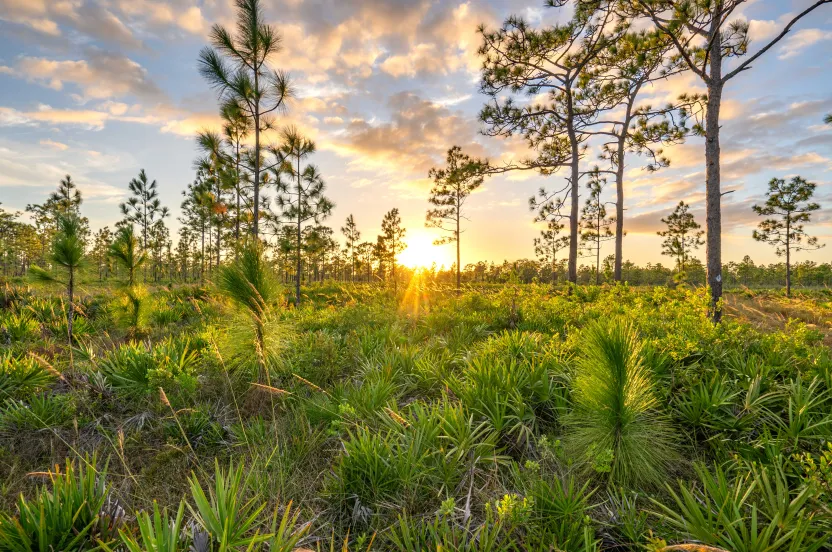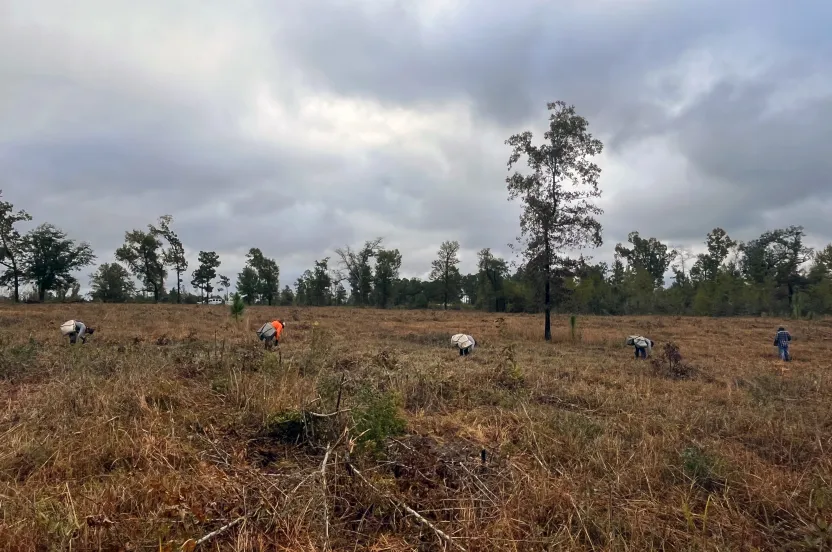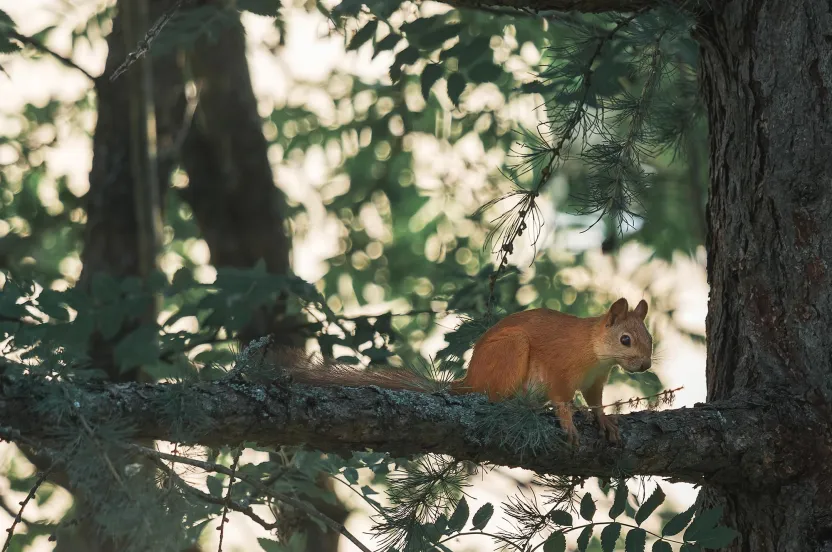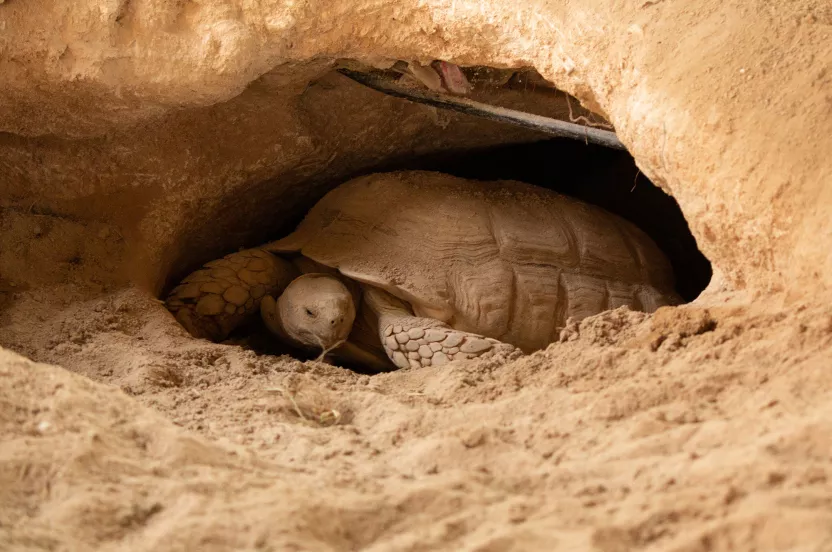Give before midnight on July 31 to double your impact where trees need us most. CHOOSE A PROJECT
For the Love of the Longleaf Pine
One tree’s storied past, current restoration, and ongoing relationship with fire.
January 20, 2024

Four hundred years ago, the longleaf pine dominated the landscape of the American Southeast.
More than 90 million acres of longleaf forest stretched from Virginia to Texas. And to this day, although the forest cover now hovers around only 5 million acres, longleaf pines remain a beloved symbol of the region.
And why wouldn’t they be loved? These trees helped to forge our country. They foster a wide range of animal and plant life. They shape a more resilient forest in the face of climate change. So take a moment to get to know these magnificent trees.
Attributes of the Longleaf Pine
Grows in many environments including wet savannas, flatwoods, foothills, and sandhills
Supports a rich biodiversity of plants, animals, and insects within one ecosystem
Withstands high winds better than most pines thanks to its strength and density
Manages drought stress effectively by using less water during drier times
Resists diseases and pests such as southern pine beetle and fusiform rust
Relies on regular fire intervals to maintain its ideal open canopy structure
Open Canopy, Vibrant Understory
Longleaf forests have a unique appearance. Their trees grow far apart, with grasses and wildflowers flourishing in the spaces between them.
These open, grassy forests are filled with thousands of species found nowhere else on the planet. Roughly 1,000 different plants grow within them, including orchids, meadowbeauties, sundews, and venus flytraps. Animals also thrive among the longleaf pines. Prehistoric gopher tortoises, tiny flatwoods salamanders, red-cockaded woodpeckers, and countless other rare wildlife all live in harmony in these forests. And there are plenty of everyday species that call the forest home, too — like fox squirrels, bobwhite quail, butterflies, and deer.
“It’s one of the most biodiverse systems in North America. Just in the ground cover of really high-quality longleaf sites, you can have over 100 species within a quarter acre,” says Carol Denhof, president of The Longleaf Alliance, a nonprofit organization dedicated to longleaf pine ecosystem restoration.
With such a high level of biodiversity, it’s no wonder there’s a collective movement to replant these pines.
Close relationship with fire
Fire is a necessity for longleaf pine forests to thrive. Not the uncontained, destructive wildfires that regularly make headlines. The fires these forests need are the low-intensity controlled burns that help to rejuvenate the landscape.
As a critical part of ongoing forest management, controlled fires are typically planned every two to five years, depending on the landscape. And the outcome is drastically different than wildfire. Healthy trees tolerate the fire well, and the understory is fire-adapted and benefits greatly.
“You run a fire through one of these forests, and within just a few days, you see green sprouts coming up from the grasses. It’s like rebirth, in a way,” Denhof notes.
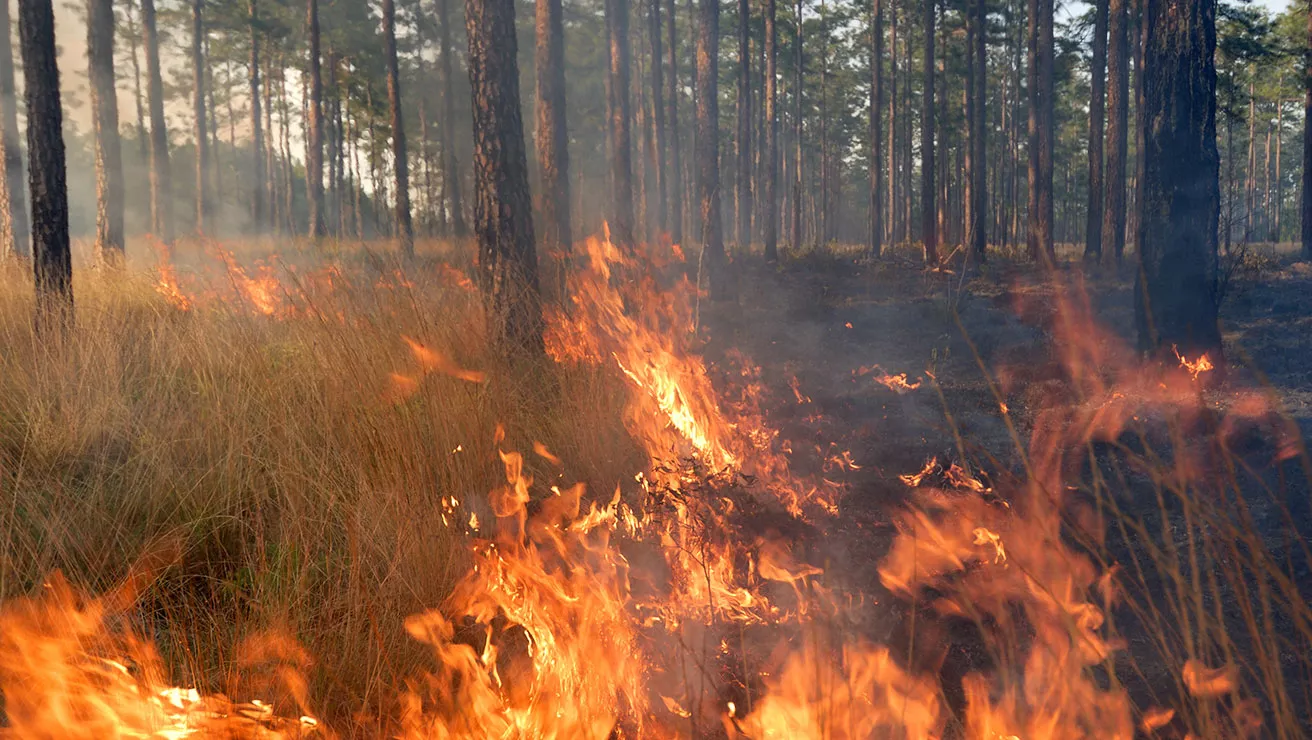
These regular fires also help to prevent out-of-control fires from happening by reducing the buildup of fuels — grass, shrubs, downed trees, leaves, and needles that burn readily.
“Fire is a really important part of wildfire reduction,” says Lisa Lord, the Conservation Programs Director with The Longleaf Alliance. “We want to burn on our terms, not when lightning strikes a tree and then all of a sudden the entire stand combusts because you haven’t done any prescribed burns.”
Suprisingly, plants aren’t the only ones adapted to low-intensity fire. Many animal species actually seek shelter in the large burrows created by the gopher tortoises that make their home among the longleaf pines.
A Pivital Point In History
As European settlers moved into this region, longleaf pines provided two different key resources: pine pitch and wood. The pitch was turned into tar and turpentine, used in colonial times to waterproof ships. Harvested lumber went into the construction of homes, ships, and railroad tracks. The groundwork for modern life in this area relied heavily on these trees.
With longleaf pine forests as far as the eye could see, the resource probably seemed limitless.
Unfortunately, it was not.
As the trees were cut, the land often transitioned into farmland or urban spaces. Some cleared longleaf forests were taken over by — or replanted with — other pines such as slash and loblolly, particularly since fire was actively suppressed in the newly settled land.
Though much of this landscape has been lost, a massive effort is now underway to save it. The Arbor Day Foundation has identified the American Southeast as an area in great need of reforestation efforts. The latest science and data point to this region as a priority, where tree planting can make the biggest impact. That’s why the Foundation is partnering with organizations across the Southeast — including The Longleaf Alliance — to plant millions of new seedlings to help restore the longleaf pine ecosystem.
Resilience In The Face Of An Uncertain Future
As climate change, water shortages, and other crises continue to challenge our natural world, longleaf pines are standing strong — ensuring that people can thrive. “We’re restoring this iconic ecosystem, and that provides all of these different cobenefits to people and to nature,” explains Lord.
One of those benefits is clean water, including drinking water for millions of residents. “A healthy forest system helps filter the water in our aquifers and groundwater. It prevents water loss from runoff,” says Denhof. “You want water to soak into the ground, versus just rolling off like on a parking lot. Even a pasture doesn’t absorb the same amount of water that a forest with native ground cover can.”
Another benefit is carbon capture to help reduce the effects of climate change. Longleaf pines live an average of 250 years. That means they’re capable of storing more carbon for longer periods of time, bettering the environment for us all.
And then there’s the resistance to fire, drought, and hurricane-force winds. As natural disasters intensify with climate change, they threaten to destroy the landscape. But longleaf pines remain rooted to the ground, their adaptability allowing them to weather these extremes and ensure the future of the forest.
As a shared passion for this tree continues to grow, more and more landowners are getting involved in efforts to restore longleaf pine forests. Lord sees it first-hand when she works with people interested in planting these trees for the first time.
“They’re entranced by the mystique of the longleaf fo rests, all the cool wildlife that are part of it, and the fire. They love the story,” she says. And really, how could they not?
The American Southeast in Focus
We plant trees around the world, but focus our efforts on key regions where trees can do the most good. In the American Southeast, we’re supporting efforts to restore longleaf pine and other native species at a massive scale. Since most of the land is privately owned, the Arbor Day Foundation is working with landowners and public entities alike to further reforestation efforts.
